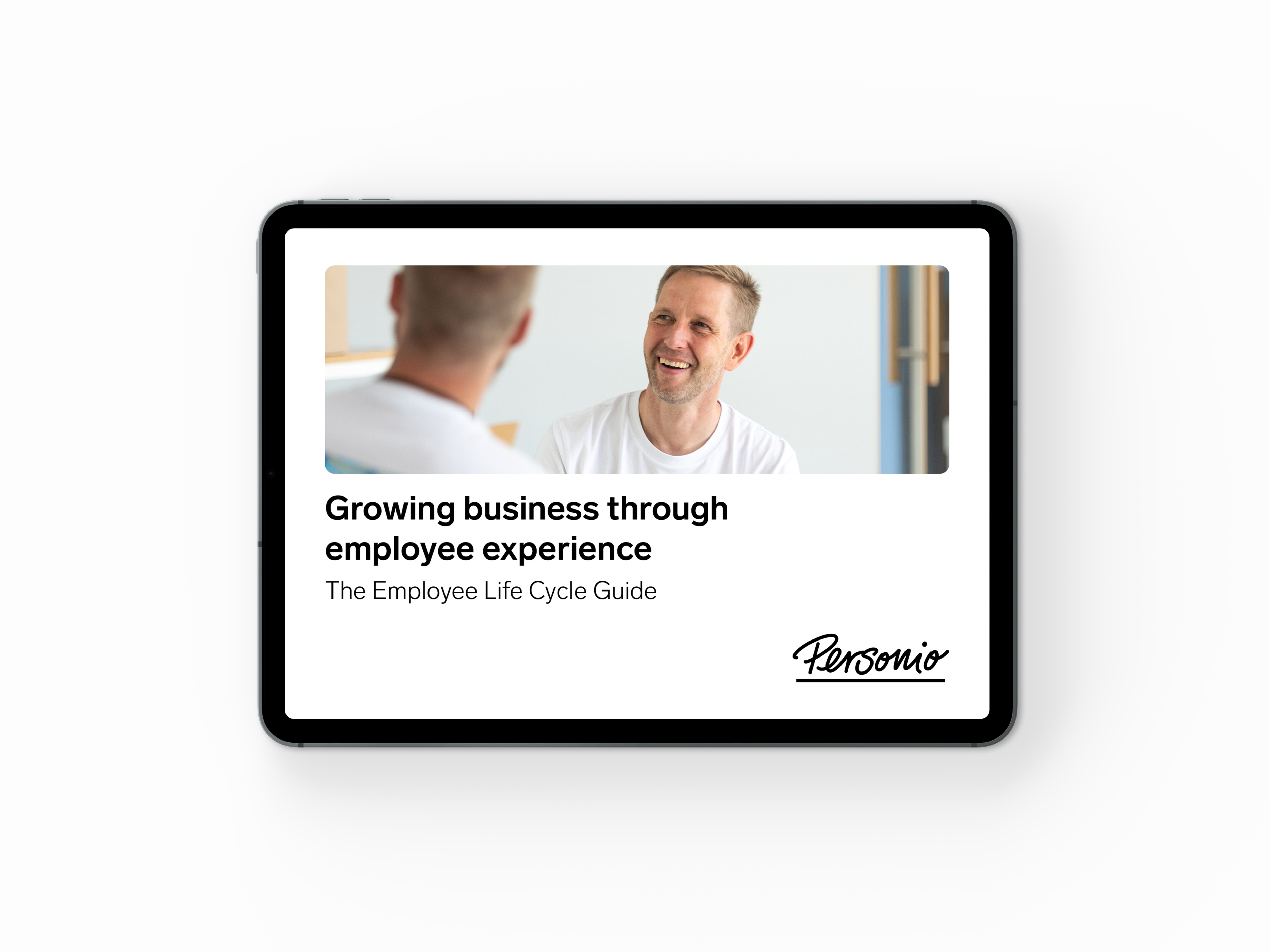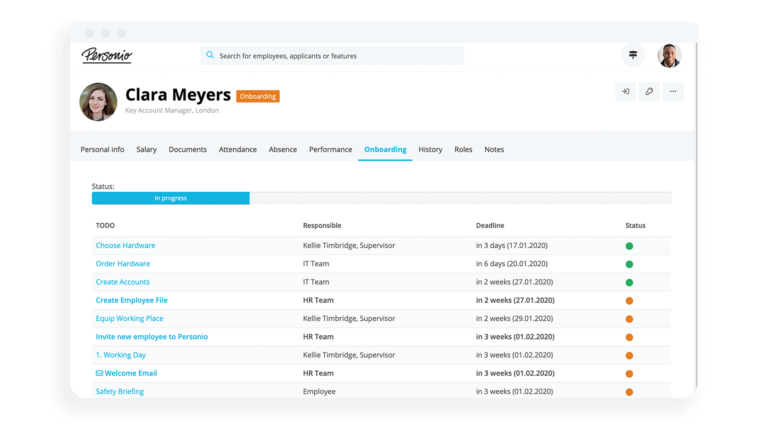What is the Employee Life Cycle? The 6 Stages for HR Leaders

The progression of staff through the employee life cycle is almost as inevitable as the changing of the seasons. But why does this matter for organisational success?
In this article, the employee life cycle allows HR leaders to help employees realise their full potential. On the flip side, being aware of the cycle also helps companies be aware of and manage, staff turnover risk.
Download our guide to get to the heart of the employee life cycle model.Contents
- 1What is the employee life cycle model?
- 2The 6 stages of the employee life cycle model
- 3Attraction: Creating a strong first impression
- 4Recruitment: Getting top talent on board
- 5Onboarding: Facilitating a flying start
- 6Retention: Making top talent stick around
- 7Career Development: Enabling continuous growth
- 8Separation: Because all good things have an end
- 9Challenges and solutions of the employee lifecycle
- 10How do you manage the employee lifecycle?
- 11Does the employee life cycle apply to nonprofits?
What is the employee life cycle model?
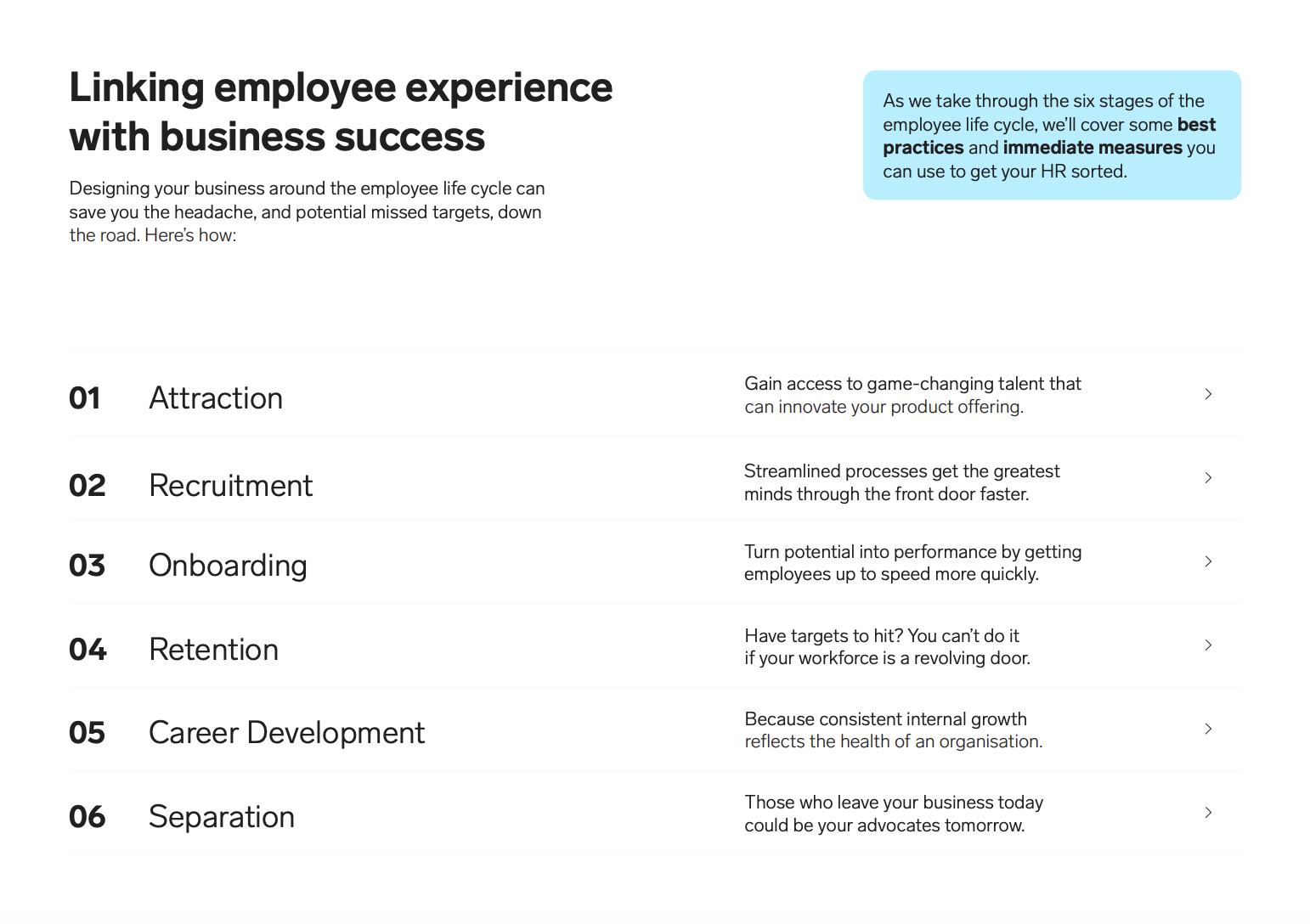
The employee lifecycle model (ELM) is a model designed to illustrate the journey an employee takes through an organisation. The six stages, attraction, recruitment, onboarding, retention, development and separation all have their own role to play.
The ELM is designed to try and visualise and better understand the way an employee engages with their organisation. This is done to help HR teams craft more engaging and more memorable employee experiences to boost business performance.
In short, if your organisation is interested in maximum efficiency and maximum performance, it would help to empower your HR team to view your workforce through the prism of the employee lifecycle model.
The 6 stages of the employee life cycle model
As mentioned above, there are six key stages that exist in the employee life cycle model. But there are also some additional stages worth noting. Let's take a look at the full picture:
Stage | Definition |
|---|---|
Attraction | The very second a potential applicant is exposed to your employer brand. |
Recruitment | The process and experience of how someone goes from applicant to employee. |
Onboarding | Helping employees understand and blend in with your corporate culture. |
Retention | Keeping employees around and satisfied with relevant rewards and recognition. |
Career Development | Helping employees get better in their roles through a variety of initiatives. |
Seperation | The process of what happens when an employee inevitably decides to move on. |
1. Attraction: Creating a strong first impression
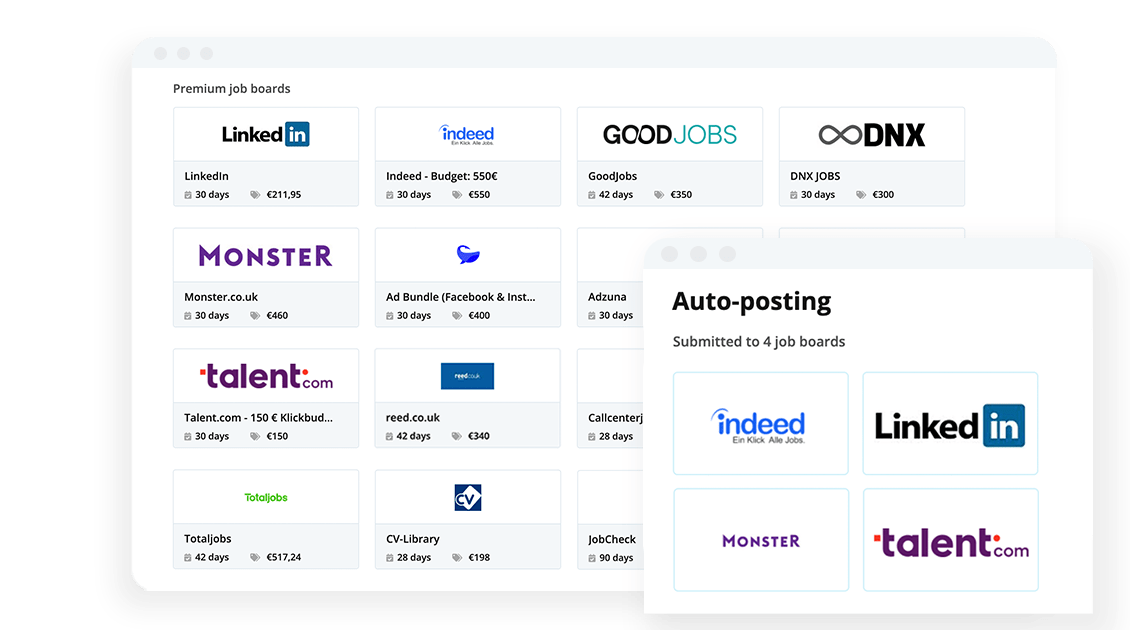
An employee's relationship with their organisation hardly starts when they step in on their first day. It doesn’t even start when they sign an employment contract or apply for the role. It starts the very second they come in contact with your employer brand.
For your employer brand to thrive, instilling the right corporate culture is key. By using the cultural web model, for instance, it’s possible to see how organisational structures, systems, rules, stories and symbols have an influence on employees.
Building on that, the next step is to showcase your culture! Prospective employees will have chosen you for many reasons: including salary, job title and job fit. But they will also have chosen to apply because your brand (and purpose) resonates uniquely with them.
Strategies for optimising attraction within the employee life cycle
Endorsements from current or former staff members are priceless. That’s why GlassDoor is so popular. But savvy future employees will also check out your equality and diversity policies, approach to mental health at work, policies on maternity leave and factors you’re your attitudes to overtime, sick pay, unpaid leave and even work-life balance (if you make this information available publicly).
Source the best talent around

Design career pages, create job ads and publish them on more than 600 portals with just one click. Say hello to seamless recruitment with Personio.
Find the Talent You Need2. Recruitment: Getting top talent on board
The next stage of the employee life cycle is recruitment. This is important whether you do this the old-fashioned way or use tools to help you manage the recruitment process.
That’s because how well you treat prospective employees during this journey (even the ones who don’t get the job) will influence their perception of your company forever.
Strategies for recruiting within the employee life cycle
Advertise positions on multiple platforms to entice a wider spectrum of candidates. The fewer media platforms you use, the narrower your chance of reaching great candidates. Going wide is great – but don’t forget the value of your internal talent pool who might be looking for a promotion or a sideways step – and consider the importance of employee referral programs. Here, multiposting can be something of a silver bullet.
Make your job adverts effective. A great job advert does more than list individual core attributes and skillsets. It entices people. Make sure you outline the available benefits – from medical cover to staff discounts and even days off for volunteer work.
3. Onboarding: Facilitating a flying start
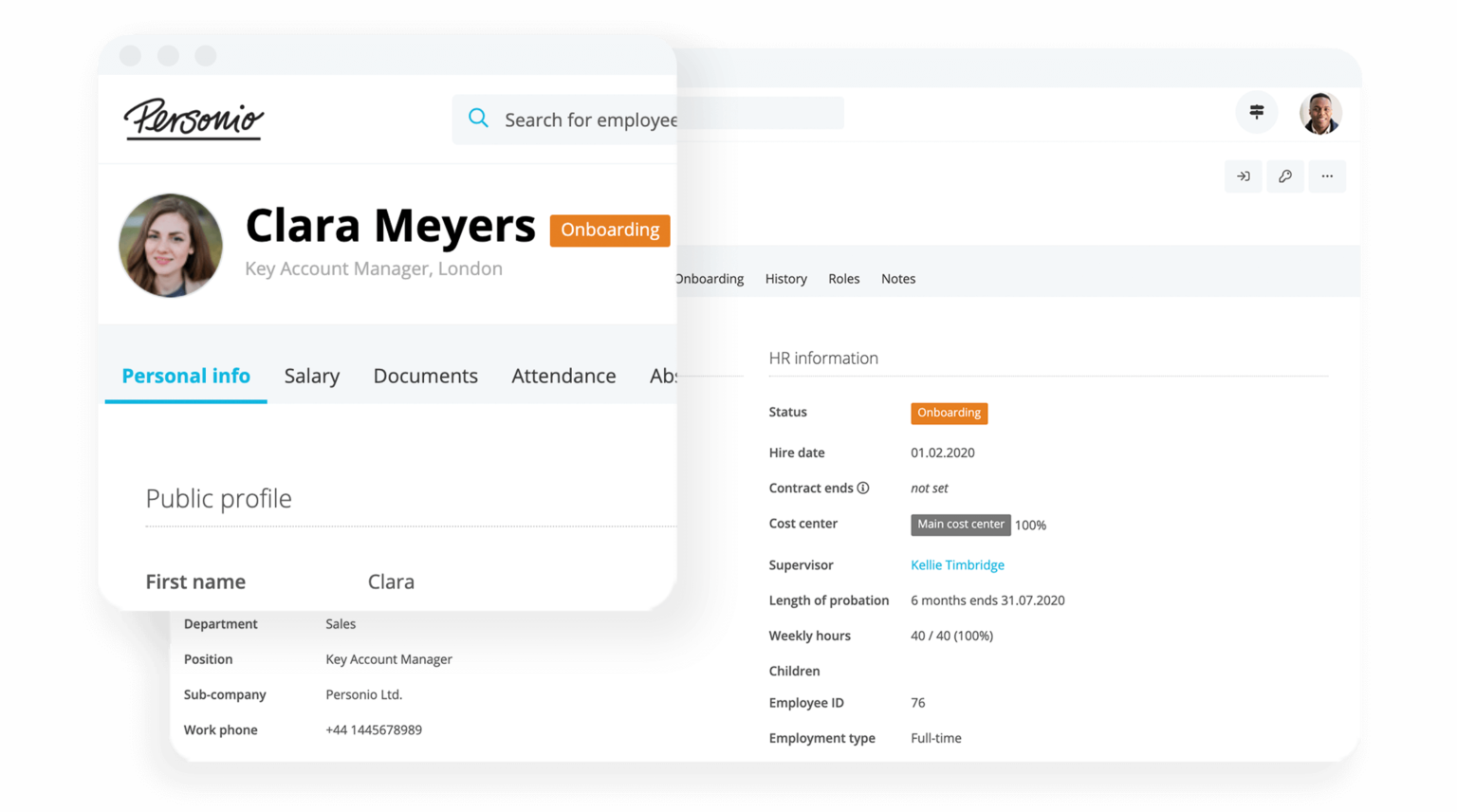
It’s natural to be excited when you start a new job. There’s a sense of optimism and potential. That’s why this is the ideal time to make people feel welcome, safe and already at home.
Getting this right will help new recruits feel like they have the potential to make their mark on the organisation.
Onboarding is about helping new employees blend in with your corporate culture and truly become part of the team. One way to do this is to make sure you’re identifying and communicating company core values.
A good onboarding process for new employees also goes a long way!
Strategies for onboarding within the employee life cycle
Make sure there’s a regular appraisal system. A good staff appraisal can help get the best out of your team. While it might be too soon, right in the first few weeks, to think about measuring performance already – the system should be introduced so employees know what’s expected of them and how they will be rewarded for excellent work.
Show them a clear path to success. One of the secrets of a successful performance management cycle is that they help align employee goals with business goals on a short and longer-term basis.
Share your company values, vision and mission. For example, at Personio our values include customer empathy, ownership, transparency, team spirit, social responsibility and fun.
Onboarding Software: For Seamless New Starts

Give every new employee a flying start with Personio’s automated onboarding software, trusted by 15,000 happy customers across the UK and Europe.
Show me more4. Retention: Making top talent stick around
Retention is a key stage of the employee life cycle. That’s because once employees have been with a company for a while, there’s a real risk that employers might start to take them for granted.
That’s why it’s important to address thorny issues such as rewards and recognition as soon as possible. Then, over time, it’s important to make sure employees know what to do to help achieve their goals, as well as what HR needs to do to keep accurate records of their ambitions, progress and success.
Strategies for retention within the employee life cycle
Over time, it’s wise to consider how to improve employee retention and boost retention rates. When employees aren’t completely happy, it’s often good to take a look at ways of boosting employee motivation.
5. Career Development: Enabling continuous growth
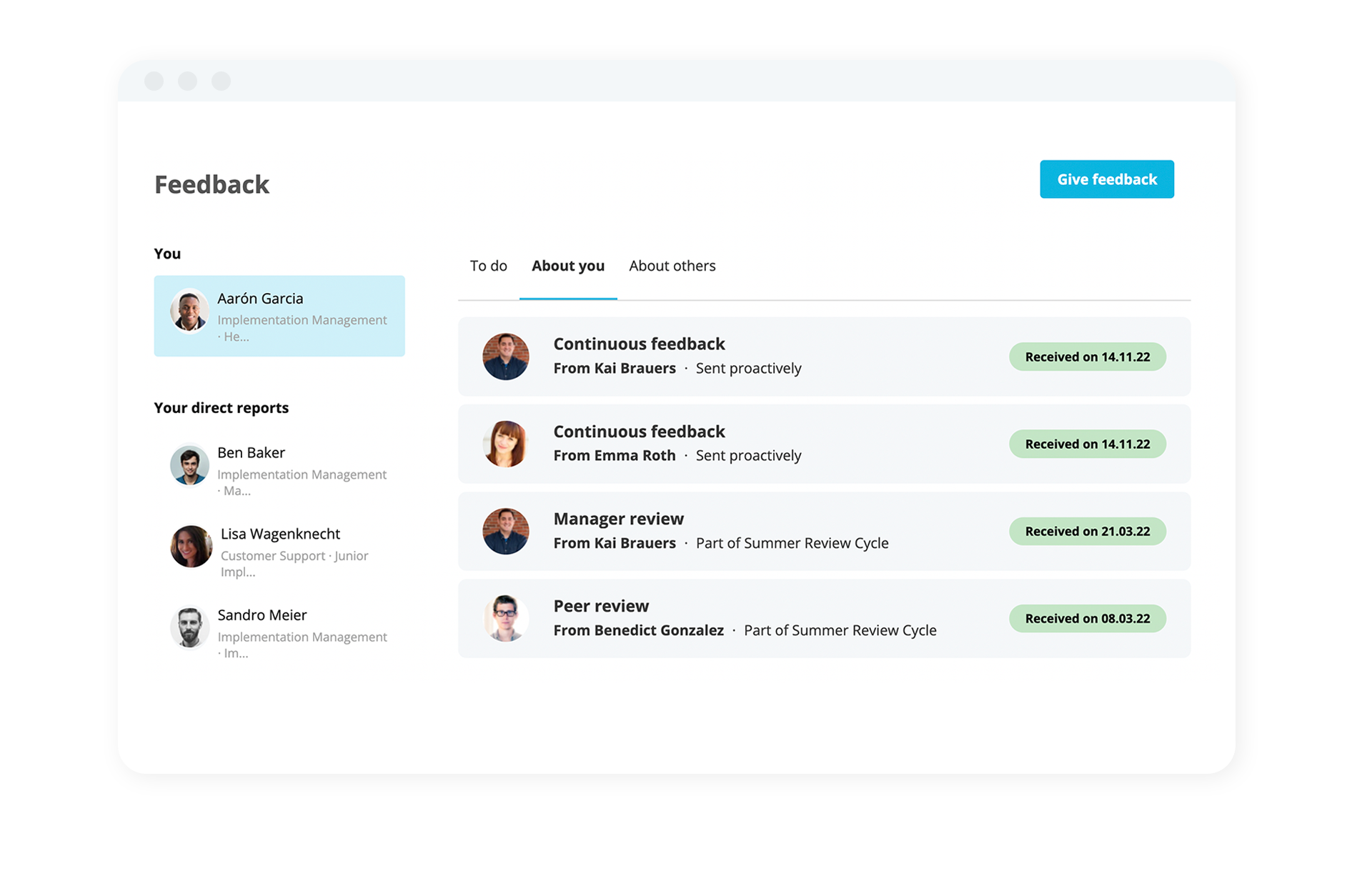
Once employees are settled and happy it’s also worth considering how strategic professional development can help you get the best out of your employees.
Strategies for development within the employee life cycle
Offer a buddy system. When experienced colleagues share their knowledge, this allows the effective dissemination of both corporate culture while giving new employees support, access to a trusted advisor and a go-to-point for asking those questions that seem stupid (but usually aren’t).
Encourage people at all stages to learn more. Whether it’s internal or external learning and development (L&D): conferences, seminars and ‘lunch-and-learns’ keep employees up to date with new trends while expanding their knowledge. If they can share their learnings with the rest of the team and make improvements based on new knowledge, it’s a win-win for all!
Sponsor or subsidise courses for those who show promise if the budget allows for it. Nothing shows a company cares for its staff more than investing in their training, education and learning.
Build better review cycles
6. Separation: Because all good things have an end
Eventually, employees decide to move on. At this stage of the employee life cycle, there are many factors at play. For example, former employees might move or look for career opportunities that they can’t get at your company, they might retire, go off to work for themselves or even be enticed away by a rival company.
At this stage, reflection is essential. Having a good offboarding process helps you understand where there is room for improvement in the employee experience (it’s probably the time you’ll get their most honest opinions). It may also bring up key considerations about how you formulate employment contracts or gardening leave policies.
Don’t forget: the separation phase of the employee life cycle doesn’t just affect those leaving, it affects those left behind. Helping them feel like they’ll be supported, even when the team member is gone or giving them the opportunity to be involved in the new recruitment process (if applicable) can help ease the pain.
Challenges and solutions of the employee lifecycle
Managing the employee lifecycle is not without its challenges. In fact, many organisations struggle with being able to manage the entire journey an employee takes from their first day to their last. It's not an easy thing to master.
Here are the most common challenges, paired with helpful solutions, that organisations can take on board:
Challenge | Solution |
|---|---|
Managing the entire employee lifecycle. For many organisations, and particular for small-to-medium-sized ones, the entire employee lifecycle is simply too vast and too broad to manage the entire journey effectively and holistically. | Organisations deserve to be able to manage the entire employee journey. An all-in-one HR software can really help here, as they are specifically designed to manage and optimise each stage of the cycle from start to finish. |
Reporting on the lifecycle. It can be very difficult to understand which stages are working well and which ones need focus and improvement. Teams often struggle to find the markets that determine next steps and jobs to be done. | This is where having access to analytics and reporting can be a game-changer for the majority of organisations. When you have fast access to the right analytics, HR can truly find themselves in the driver's seat (and not playing catch-up). |
Collecting feedback. A huge part of the employee lifecycle is engaging employees, and that requires understanding how employees are feeling and where certain stages may be lagging. | Running timely engagement surveys are various stages of the employee lifecycle can be a huge benefit to your team. Consider running a survey immediately after onboarding or performance reviews. |
Identifying efficiencies and maximising productivity. Because the employee lifecycle is so vast, it can feel long and protracted. Often, organisations struggle to find efficiencies to save them time (while also saving potential hassles for their own employees). | Is your onboarding too long? Is it too hard for employees to upload their documents? Are performance reviews fit for purpose? These are things that only HR teams with time can sit down, strategise and solve for. Great HR management can find that time. |
How do you manage the employee lifecycle?

The employee life cycle is the bread and butter for organisational success. After all, every phase of an employee’s journey with a company provides its own opportunity to improve the employee experience.
That's why an all-in-one HR software can be such a help to organisations. When you invest in a software designed to manage and optimise all of your important HR work, you can gain back time worth investing in overall employee experience.
How much does an HR software cost? What features can it cover? These are all questions we can help answer. Ask our experts by booking your very own web demo today. In it, we can talk about your common roadblocks and how to solve them with HR software.
Does the employee life cycle apply to nonprofits?
The employee life cycle is very important for nonprofits, too. The only thing that may change is where your average nonprofit or charity may want to focus their efforts. Some of the most important stages of the life cycle for any nonprofit are likely to include:
Attraction
Recruitment
Development
The first stage, attraction, is important for just any business. But especially nonprofits who are trying to recruit volunteers, it really helps for people to know about your employer brand and your overall vision. Attracting people to your mission is key.
From there, recruitment and candidate experience play a huge role for nonprofits. This is where you find the candidates who can really get behind your vision and make a change. Your team needs to be able to find, screen, evaluate and hire them with as little friction as possible.
Many nonprofits also choose to make development a focus. Especially as it concerns keeping employees engaged and motivated, things like pulse surveys and well-structured performance reviews can make a massive difference.
Ultimately, each stage of the employee life cycle plays a key role in how organisations run their people processes. Chances are that your nonprofit or charity will have their own unique needs.
To learn a bit more about how Personio supports busy nonprofits, through each stage of the employee life cycle, find out more right here.
WATCH: Get to know Personio in three minutes

We need your consent to load this service!
This content is not permitted to load due to trackers that are not disclosed to the visitor.
Disclaimer
We would like to inform you that the contents of our website (including any legal contributions) are for non-binding informational purposes only and does not in any way constitute legal advice. The content of this information cannot and is not intended to replace individual and binding legal advice from e.g. a lawyer that addresses your specific situation. In this respect, all information provided is without guarantee of correctness, completeness and up-to-dateness.
